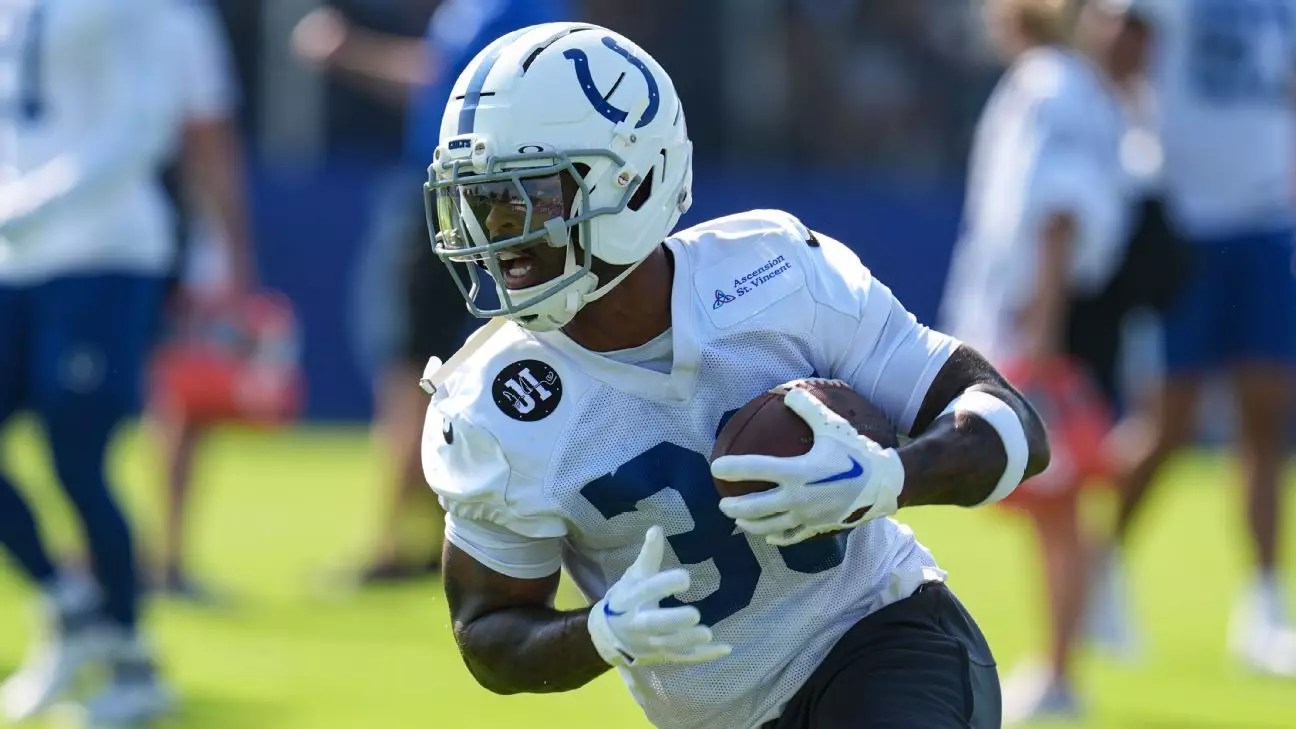In the high-stakes world of professional football, every practice session is a delicate balance between preparation and peril. The recent injury of Salvon Ahmed during a Colts training camp underscores a harsh reality: even with stringent rules and safety protocols, the sport’s inherent violence can shatter the illusion of control. Football coaches, players, and organization heads often pride themselves on developing toughness, but at what cost? The very attempts to push athletes to their physical edge may inadvertently expose them to avoidable dangers. The incident reveals an uncomfortable truth—safety measures like banning certain tackling techniques are only effective if rigorously enforced and genuinely prioritized, not merely token gestures.
Rules Are Only as Strong as Their Enforcement
The banned hip-drop tackle exemplifies the ongoing struggle within the sport to mitigate catastrophic injuries. Despite a clear prohibition introduced last season, the injury suggests that rules alone are insufficient without an accompanying culture of accountability. The complexity lies in the fact that some techniques, even when outlawed, persist due to cultural ingraining and a desire to gain a competitive edge. Coaches and players alike tend to rationalize aggressive drills as necessary for game-readiness, often overlooking the potential long-term harm. The Colts’ decision to incorporate more live tackling sessions, although well-intentioned, risks crossing the line where competitive intensity endangers player welfare. The injury to Ahmed not only questions the efficacy of current safety protocols but also protests the larger philosophy that sometimes, the drive to win justifies risking player health.
The Ethical Dilemma of Competitive Intensity
The decision by Colts coach Shane Steichen to proceed with the practice despite Ahmed’s severe injury exposes a disturbing prioritization of “toughness” over safety. While developing resilience and game readiness are undeniably important, the insistence on continuing practice raises ethical questions about the value placed on human well-being. Players like Zaire Franklin, who emphasize the importance of reps and team competitiveness, may inadvertently perpetuate a culture that dismisses the inherent risks. This attitude risks transforming football from a sport of strategic skill to a reckless display of physical endurance. Ultimately, fostering a culture where player health is secondary to practice intensity indicates a troubling neglect of a core moral obligation held by teams and organizations.
The Toughness Paradox: Building Resilience or Building Risks?
From a center-left perspective, the obsession with toughness must be critically examined. Resilience and grit are admirable qualities, but they should never come at the expense of safety. The tragic injury of Ahmed illustrates that the line between preparing players for the real game and exposing them to avoidable harm can be dangerously thin. It also highlights a broader societal tendency to valorize endurance in the face of risk—whether in sports, work, or social life—without adequately accounting for the human costs. We need to challenge the narrative that brutality is synonymous with discipline or professionalism. True leadership in sports involves safeguarding athletes while cultivating competitive spirit, not sacrificing safety on the altar of perceived toughness.
The Path Forward: Prioritizing Player Welfare in the Pursuit of Excellence
This incident serves as a call to reevaluate how football organizations, coaches, and players approach training and practice procedures. Effective change requires more than just rule amendments; it demands a fundamental shift in mindset—where player safety is a non-negotiable baseline, not a secondary consideration. Modern sports must embrace a culture where innovations in safety technology and stricter enforcement complement a transparent dialogue about risks. Only then can the sport reconcile its desire for physical excellence with a moral commitment to protect its athletes from preventable injury. Until such a paradigm shift occurs, the danger persists that the very pursuit of greatness will continue to come at an unacceptable human cost.

